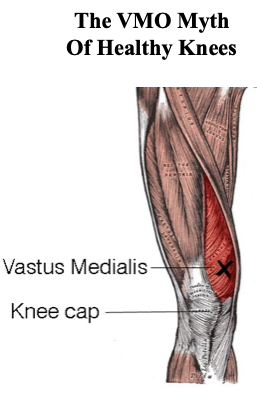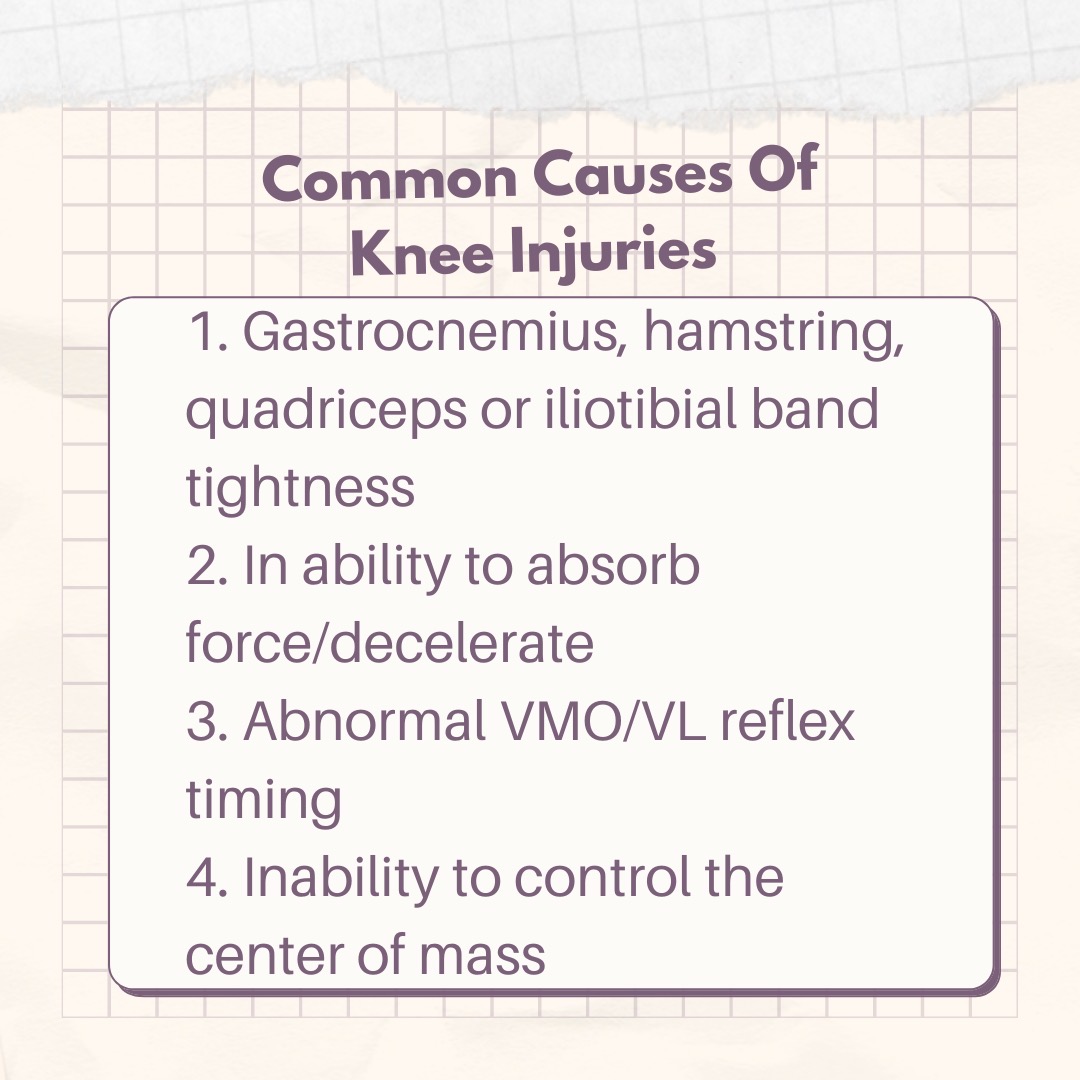Why The VMO Myth Won’t Die
2022-03-20
Sometimes I think we have progressed so much in our training and understanding of the body since the ’90s and other times I feel like we are heading back more to the ’80s. I say that because the popular posts I see on social media seem to be taking us back that way and there are few better examples seen in the lack of understanding of the VMO and knee health.
Research for a long time has shown that the vastus medialis oblique muscle (VMO, the quad muscle on the inside part) was not working right in many people with knee issues. Now, there are a few things to understand with this idea.

The thought around improving the VMO was that it would provide better tracking of our patella and many issues of the knee were thought to be involved around how the patella tracked. This led to many therapists, fitness pros, and performance coaches to focusing on how to make the VMO stronger. Here is the problem though, most of the research never really claimed the VMO was weak, but rather, just wasn’t as active as we would like to see it.


Two HUGE mistakes about the VMO are, the inactivity of the VMO may be a result of other issues in our movement and very little to do with the muscle itself. Second, there are plenty of issues that can cause knee problems that have nothing to do with the VMO! That is why training progressive functional movement is a far more effe active solution.
Hmmm, doesn’t that mean strengthening a muscle makes it more active? Yes, the more you isolate a muscle the more active you can make it. That doesn’t mean though that the muscle works better in integrated movement as the researchers in the paper, “Kinetic Chain Exercise in Knee Rehabilitation” explain…
“Additionally, kinetic chain exercise through recruitment of all hip, knee, and ankle extensors in synchrony takes advantage of specificity of training principles. More importantly, however, it is the only way to reproduce the concurrent shift of ‘antagonistic’ biarticular muscle groups that occurs during simultaneous hip, knee, and ankle extension. Incoordination of the concurrent shift fostered by exercising each muscle group in isolation may ultimately hamper complete recovery”
View this post on Instagram
So, instead people are changing HOW we squat in order to get more VMO, that is the answer right? Well, that shows we still don’t understand the idea that if we change a movement pattern (especially in a negative way) just to get more of a muscle to work, that isn’t still teaching the muscle to turn on during functional activities properly. Because the body still hasn’t learn to coordinate the muscles in the right way in how we move without these artificial modalities like wedging the heels!

A great deep squat requires high levels of functioning of the foot, ankle, knee, hip, and core!

When we understand how the ENITRE chain has to function, we realize the solution goes back to progressive movement. Trying to isolate, or even focus on individual muscles actually causes more issues because we end up disrupting the chain!
So, how do we build real solutions for the knee and start to put behind us the idea of training the VMO as our priority or any ONE muscle? Check out solutions that are scientifically backed!
Step 1: Build Good Foot Stability & Ankle Mobility
A lot of times people end up wedging their heels because they are trying to replace the ankle dorsiflexion that is needed for healthy knees. For one, hopefully you can see the issue in artificially giving the body mobility instead of actually, I don’t know, building better mobility? How do we even know if we actually have poor ankle mobility? Physical therapist, Jessica Bento gives a simple screen below…
If you have real ankle mobility issues, then we should work on that quality because having ankle issues will impact how we walk as well. Problems in how we walk (especially the mechanics of the foot/ankle) can result in knee issues. I don’t know about you, but trying to walk with wedges on my feet just means we should all wear high heels (which interestingly has been linked to causing knee issues so, you know????). What we should do is try to resolve ankle mobility like Jessica shows below…
View this post on Instagram
Then we also want to teach to build stability in the foot because lack of stability of the foot (as per the Joint by Joint Approach) can cause mobility issues in the ankle. That is why this foundational squat that Jessica shows is full of feedback cues to the lifter.
You can learn more about how to teach and progress better squats along with improving ankle mobility in Jessica’s DVRT Rx Knee Course HERE
Step 2: The Knees Go Out, Not Forwards
There will always be those that say we need to squat with our feet forward. I’m not sure how that is possible as both individual differences in their femur length and how the head of the femur fits into our hip joint is going to influence largely how well someone could actually squat with their feet forward. Sure, there is a good amount of ankle mobility required, but any good deep squat requires good ankle mobility. There are issues with squatting with the feet forward beyond our natural structure.
I don’t know about you, but I would never squat down to pick something up with my knees going forward. It isn’t nearly as “functional” as people would think. Second, maybe more importantly, is that we have a missed opportunity to build even better movement. When we squat in the way we recommend in DVRT, we push the knees out a bit and that actually increases the activation of the glutes. The deeper we go, because we have to continue to push the knees out the more and more glutes we use.
Wait, did I JUST say to not focus on muscles? Yes, I did! However, this is different because we are talking about the glutes working in a very natural way with the rest of the entire chain when we squat with a bit of knees out versus trying to squat with the feet going forward.

We’ve been fortunate to consult with women’s clean and jerk record holder, Mary Theisen-Lappen and as you can see, her knees go out as her feet slightly do as well.
Step 3: Integrate The Core
The core seems so far away from the knees it can’t have the impact that the VMO can right? Well, the core controls the hips a lot and the core is connected to our feet, so yea, HUGE and more important than the VMO. In fact, research has shown that the core has a big impact upon our knees and lower body.
In this 2018 paper from “Physical Therapy in Sport” explains, “This systematic review provides preliminary evidence for the association between impaired core stability and the development of lower extremity injuries in healthy athletes. Deficits in various aspects of core stability were identified as potential risk factors for lower extremity injuries. As such, core stability needs to be considered when screening athletes.”
That is why in DVRT we connect the core in our squats and Coach Cari Satre shows just some of our progressions. Do we get better VMO activation? Yes, but we get SOOOO much more too! This starts our series to better knee health and in an upcoming post this week we will show where we keep taking our training to not only have a strong VMO, but entire lower body too!
Don’t miss the FINAL day to save 15% on our Foot & Knee Masterclass with code “foot15” HERE
View this post on Instagram
© 2025 Ultimate Sandbag Training. Site by Jennifer Web Design.







